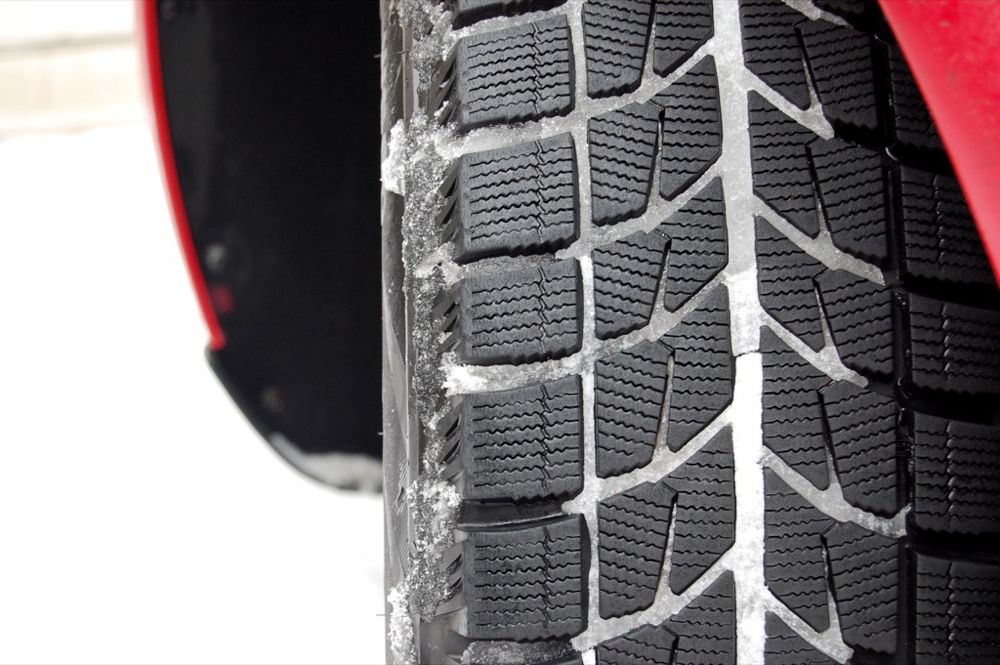Is it really all doom and gloom for electric car owners when winter weather comes, and will electric car owners be stranded in the snow as many columnists have suggested? That's the suggestion we've seen time and time again over the weekend as another band of heavy winter storms is poised to hit already frozen states from Illinois and Oklahoma through to the eastern seaboard.
We've already proven that the 2011 Tesla Roadster Sport 2.5 can cope with moderately cold weather without range loss, but what about other cars and colder temperatures?
Fist, we should point out that very low extremes of temperature will drastically affect every car, including electric vehicles. For an electric car a lot of this energy is lost due to a lack of thermally managed battery packs, unheated overnight storage, how the car is used during the day, and the use of cabin heaters.

2010 Tesla Roadster Sport 2.5 Cold Weather Testing
Liquid Thermal Battery Management
Liquid thermal battery management can keep electric car battery packs at optimal operating temperature to ensure optimal range regardless of the weather by heating or cooling the battery pack as required.
But not every electric car uses liquid thermal battery management, something Tesla’s CEO Elon Musk has been very keen to point out in the past when mocking rivals’ electric cars.
Why did Musk rant? Nissan and Mitsubishi, unlike Tesla, Coda, Ford and Chevrolet, does not use liquid heating or cooling in their respective 2011 LEAF and 2012 i electric cars. Without heating to keep the battery packs warm in very cold weather the internal resistance of the packs will increase, reducing the amount of high-current power that can be withdrawn from them and ultimately, limiting range.
Bear in mind, however, that a car with a liquid heating system for the battery will use that system to keep the battery pack warm when the car isn’t being driven. Leaving the car outside and unplugged will affect your range, as energy from the battery pack is used to keep itself warm.
To avoid adverse mileage in cold weather in an electric car with thermal management of the battery pack, ensure it is plugged in whenever it is not in use.
Car Storage
In general, the coldest weather tends to happen at night. For most electric car owners, that translates to the time when their electric cars are charging in a garage, parking lot or other covered area.
Being in a garage helps keep the battery and car at a warmer temperature, meaning that in the morning the batteries are generally warmer than they would be if the car had been stored outside.
Since the battery will generally stay warm while the car is being used due to the heat generated as the chemical energy storage of the battery is turned into electrical energy, the battery pack should remain reasonably warm and responsive as long as the car is being used.

Driving on ice in Paignton, England
Usage
Taking your electric car from your home garage to your the garage in your place of work shouldn’t affect the range that much in cold weather, provided you have a reasonable route devoid of too much stop/start traffic.
On the other hand, leaving an electric car parked outisde all day without any way to keep its battery pack warm will significantly affect your range.
Cabin Heating
Keeping the interior of any car warm requires energy. in a gasoline powered car this energy comes from the heat wated by the internal combustion engine. In an electric car, heat comes from a heating element which has to consume electrical energy to warm the car.
But don't worry. There are some solutions to ensure that the energy drain from keeping you warm is as small as possible.
Some cars, like the 2011 Tesla Roadster Sport 2.5, use heated seats. Other electric cars offer heated steering wheels. Both these features can produce heat to keep the driver warm more efficiently than a traditional cabin heater, reducing energy loss to heating and improving range.
Additionally, pre-heating the cabin before you leave in the morning can also help save energy during the drive. Since it takes less energy to keep a set temperature than it does to raise the temperature of a cabin, set the car’s pre-heat function to warm the car before you unplug in the morning. The 2011 Nissan LEAF, 2011 Chevrolet Volt and 2012 Ford Focus all have this feature.
Extremes - and Surviving Them

winter tire
As pointed out in The Washington Post by Charles Lane, being stuck in sub-freezing weather for six hours could certainly impact on your electric car’s range if the heater is needed to keep you warm. Similarly, pointing out that electric cars cannot be charged when home power is cut hardly needs to be stated.
But we’d like to hope that in areas where heavy winter snow de facto and authorities are used to dealing with extreme snowfall, such tailbacks and power cuts are relatively unusual.
As for areas where winter snow brings the world to a standstill? We’d like to think common sense is applied and where possible; you think twice about that commute anyway regardless of the vehicle you drive.
If you do encounter snow and want to make the most of winter weather in your electric car we'd recommend you follow three simple points:
- Keep your car plugged in so it can keep itself warm
- Store your car in a garage when it is not in use
- Pre-heat the cabin while charging from the mains, and use seat heaters and/or steeringwheel heaters where appropriate.
Do you drive your electric car in snow? What experiences do you have? Don't forget to tell us in the Comments below.












